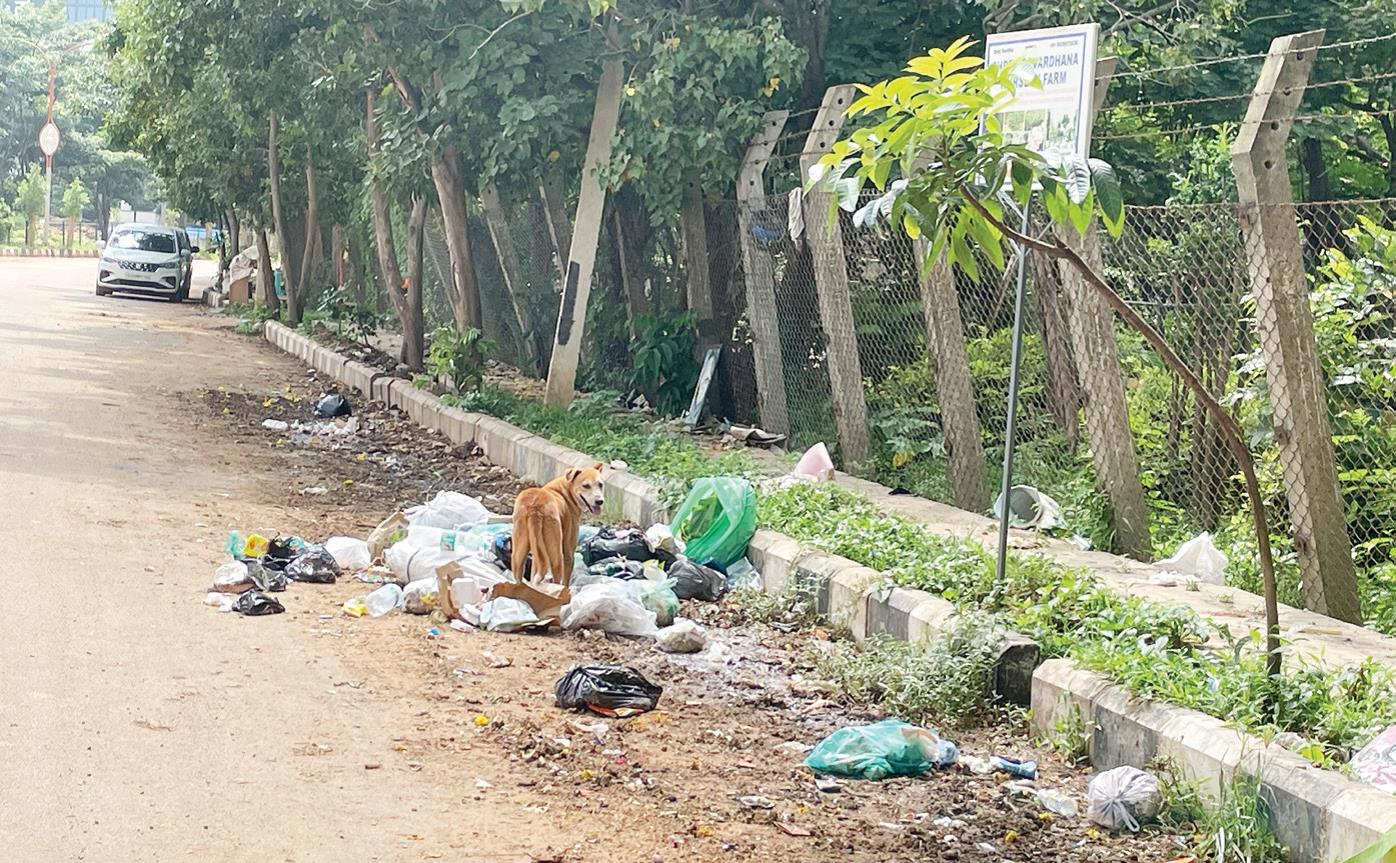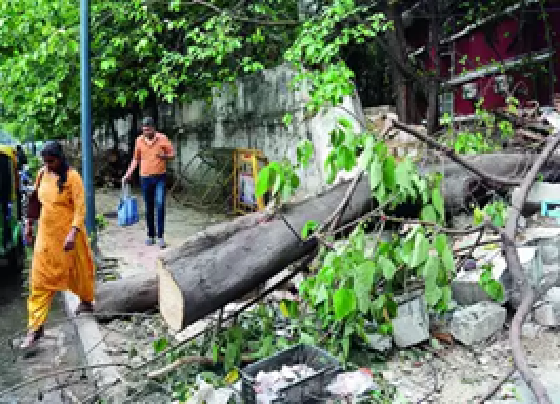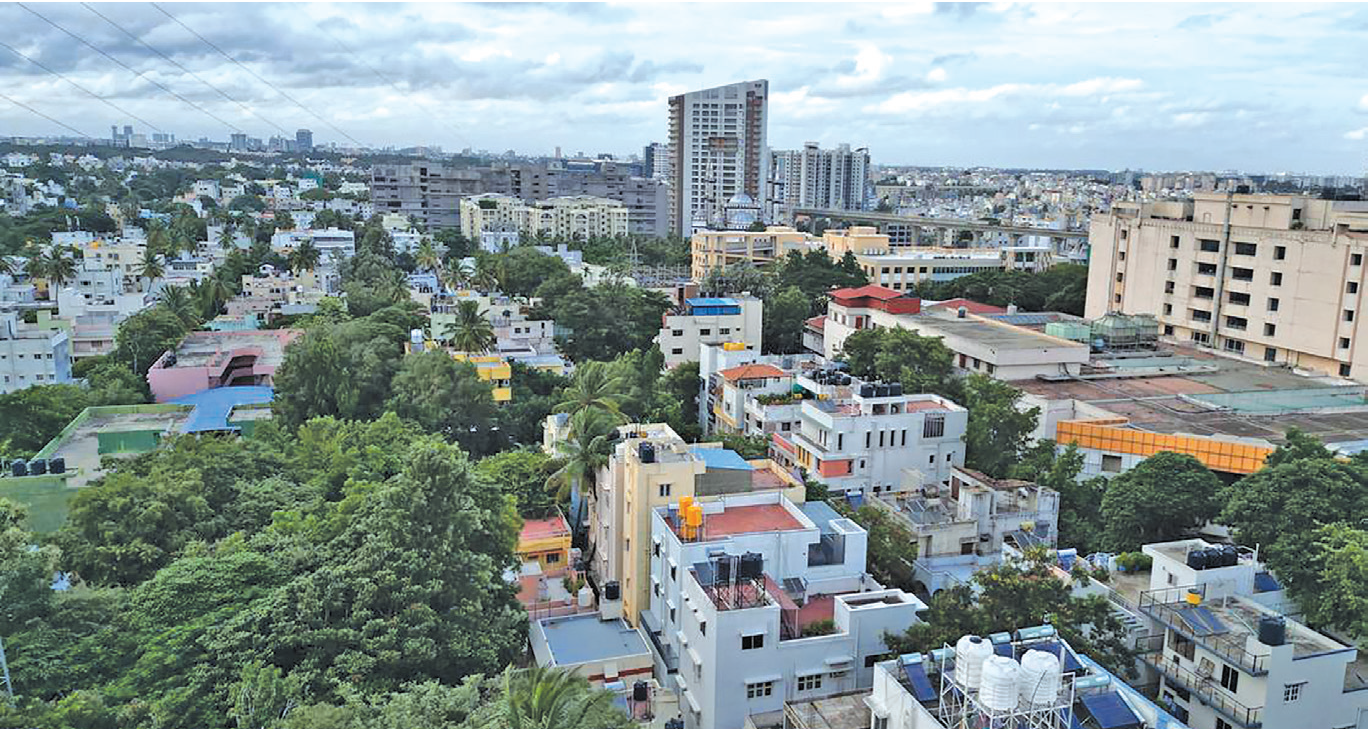
Growing pains: Yelahanka Satellite Town faces urban challenges aplenty
Bengaluru, NT Bureau: North Bengaluru’s Yelahanka Satellite Town Ward 4 is now facing the downside of rapid urbanisation. Being a part of the Bruhat Bengaluru Mahanagara Palike (BBMP) Yelahanka Satellite Town is a rapidly developing area known for its mix of residential colonies, commercial establishments, and educational institutions.
The ward has witnessed significant growth in recent years, with infrastructural developments that reflect its growing appeal as a residential and commercial hub. However, this rapid growth has also led to several challenges, creating a need for strategic urban planning to manage the burgeoning population and its demands.
One of the most pressing issues in Ward 4 is traffic congestion. As the area continues to develop, the volume of vehicles on the road has increased dramatically, leading to long commute times and heightened air pollution.
The narrow roads and the lack of efficient traffic management systems exacerbate the situation, making daily commutes a hassle for residents. The ongoing metro construction in the area has further added to the congestion, with road diversions and construction zones slowing down traffic.
While the metro promises to ease transportation woes in the future, the current situation has left many residents frustrated. As one resident put it, “Inconvenience today for a better tomorrow doesn’t mean I have to stand in traffic for 40 minutes every day after a long day’s work.”
Public transportation in Yelahanka Satellite Town Ward 4 is another significant concern. Despite its rapid development, the ward suffers from inadequate public transportation options. Residents often find themselves relying heavily on private vehicles, further contributing to the traffic woes.
There are not enough BMTC routes to effectively serve the growing population, leaving many areas underserved. This lack of connectivity underscores the need for improved public transport solutions to accommodate the expanding population.
When News Trail spoke to the BMTC about this issue, they mentioned that new routes have been introduced and that efforts are underway to improve connectivity from Yelahanka. However, residents believe more needs to be done to ensure the public transportation network can meet the demands of the ward’s growing population.
The rapid population growth in Ward 4 has also strained existing infrastructure, leading to several basic amenities issues. Water scarcity is a recurring problem, with the supply often failing to meet the demand, especially during peak summer months. Power cuts are frequent, disrupting daily life and affecting local businesses.
Waste management is another area of concern. The BBMP’s irregular garbage collection has led to litter accumulating on the streets, causing unsanitary conditions and unpleasant odours.
Piles of uncollected garbage not only affect the aesthetic appeal of the ward but also pose health risks to the residents, particularly during the rainy season when the waste can lead to waterlogging and breeding grounds for mosquitoes.
One resident shared his frustration and said, “As much as we love the growth of our area, it’s frustrating to see garbage piling up on the streets. It feels like we’re being forgotten amid all this development.”
In addition to these issues, the lack of green spaces and recreational facilities has become a growing concern for residents. As the ward continues to urbanise, open spaces are being increasingly encroached upon, leaving little room for parks and recreational areas.
The shortage of green spaces affects the quality of life, particularly for families and children who lack access to safe and clean outdoor environments. Compounding this problem, aged trees in the area are losing their vitality due to inadequate water supply, which has weakened their roots.
This has led to an increase in the number of trees falling during storms or heavy winds. Residents have noted that it often takes days for the BBMP to clear fallen trees, further disrupting daily life and creating additional hazards.
The need for more parks and recreational facilities, along with proper care for existing green cover, is evident. Addressing these concerns will be crucial in ensuring the long-term sustainability of the ward.
 English daily published in Bengaluru & Doha
English daily published in Bengaluru & Doha






